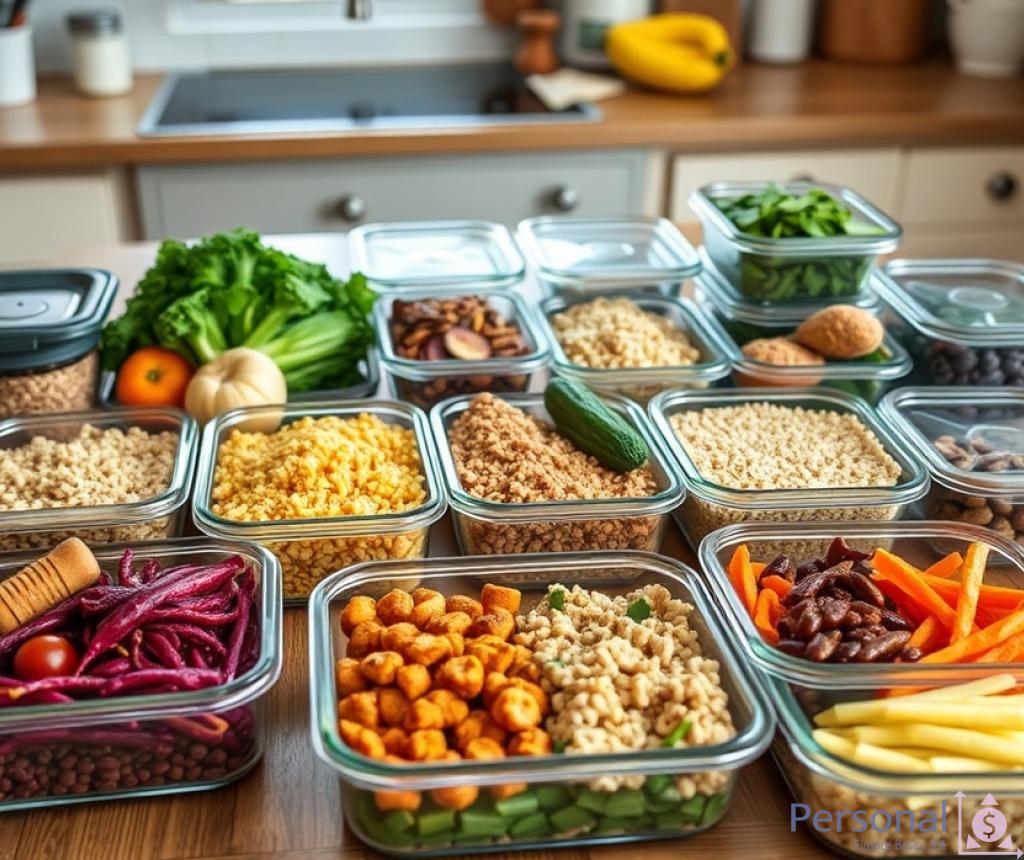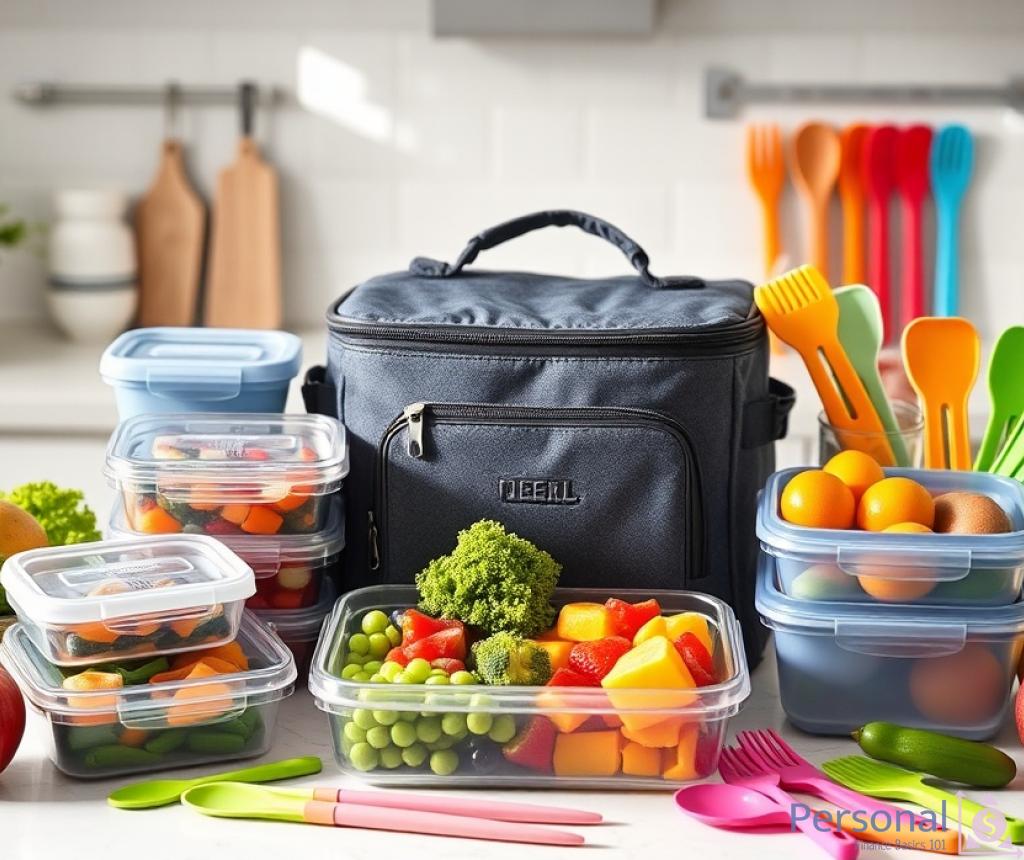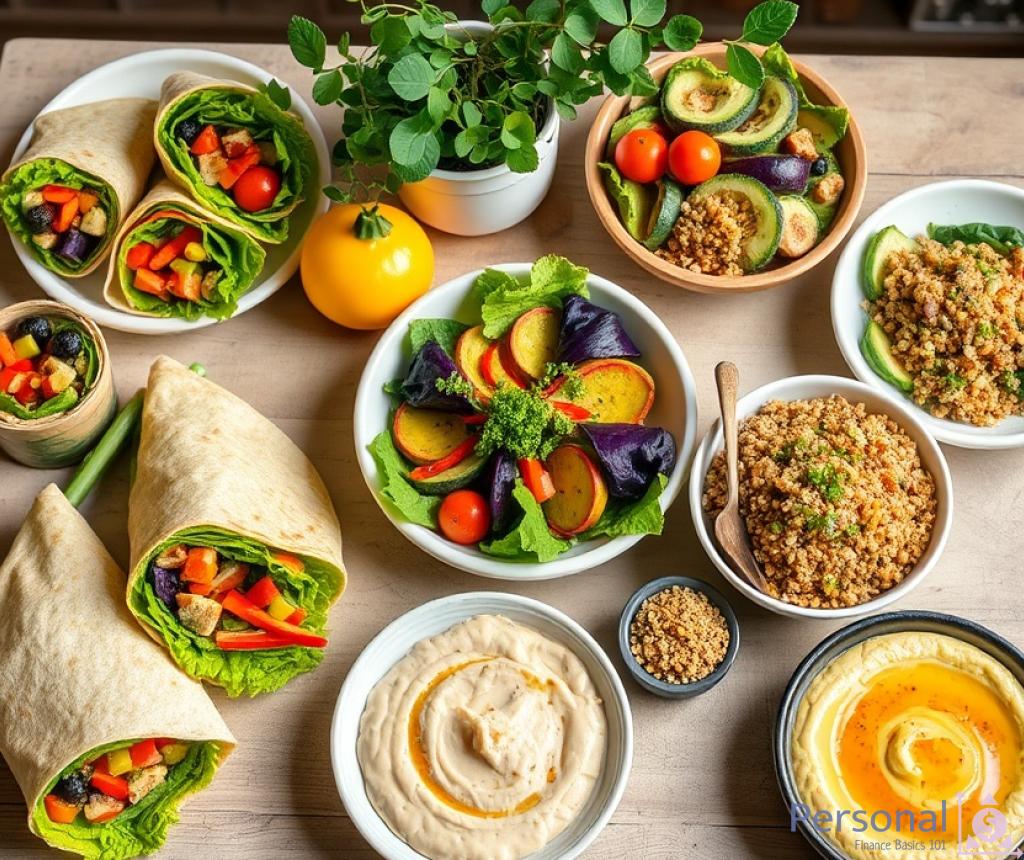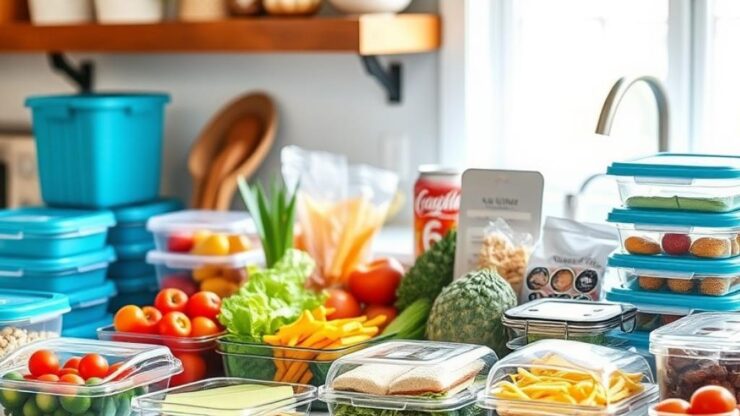Cost-Effective Meal Planning Strategies

Meal planning is not just a trend; it is a practical approach that can significantly reduce your food expenses, particularly when it comes to packing lunch. By investing a little time in planning and preparation, you can avoid the pitfalls of purchasing expensive, ready-made meals that often lack nutritional value. This strategy not only helps in saving money but also promotes healthier eating habits.
Implementing effective meal planning strategies can revolutionize your lunch packing routine. Here are some essential techniques to consider:
- Batch Cooking: Prepare large quantities of food that can be portioned and stored for the week. This minimizes cooking time and maximizes savings.
- Utilize Leftovers: Transform last night’s dinner into today’s lunch. Get creative with leftovers to reduce waste and save money.
- Buy in Bulk: Purchase staple ingredients in bulk to benefit from lower prices and reduce overall costs.
- Seasonal Shopping: Opt for seasonal produce that is often more affordable and fresher than out-of-season alternatives.
Choosing to pack your own lunch can lead to substantial savings over time. Below is a comparison of the costs between buying lunch and packing your own:
| Lunch Option | Average Cost | Annual Cost (5 days/week) |
|---|---|---|
| Buying Lunch | $10 | $2,600 |
| Packing Lunch | $3 | $780 |
The above comparison illustrates that by simply packing your own lunch, you could save over $1,800 annually. This significant saving can be redirected towards other financial goals, making meal packing not only a healthy choice but a financially savvy one.
Essential Tools for Efficient Lunch Packing

In the quest to pack nutritious and budget-friendly lunches, having the right tools can dramatically enhance your meal prep experience. Investing in quality lunch packing essentials not only streamlines the process but also encourages creativity and organization in your kitchen. This ensures that your packed lunches remain appealing, fresh, and cost-effective.
One of the cornerstones of efficient lunch packing is using the right containers. Durable, leak-proof containers are essential for preventing spills and maintaining the integrity of your meals. Options made from glass or BPA-free plastic are excellent choices, as they provide durability and ensure food safety. Additionally, compartmentalized containers allow for portion control and the separation of different food items, making your lunch visually appealing and easy to consume on the go.
To keep your meals fresh throughout the day, consider using insulated lunch bags. These bags are designed to maintain the temperature of your food, whether you are packing hot or cold items. Pairing these bags with reusable ice packs can further enhance cooling efficiency, ensuring that perishable items like salads or dairy products stay safe for consumption. This combination not only preserves the quality of your meals but also eliminates the need for costly pre-packaged options that often contain preservatives.
Incorporating versatile kitchen gadgets can make your meal prep process even more efficient. Tools such as food processors can simplify the chopping and mixing of ingredients, while measuring cups and spoons ensure accurate portioning, which is vital for maintaining balanced meals. Furthermore, high-quality knives can expedite your food preparation, allowing you to create delicious, homemade meals in a fraction of the time. These investments in kitchen tools not only save you time but also inspire you to experiment with new recipes, ultimately leading to more diverse and exciting lunches.
Creative Recipes for Budget-Friendly Lunches

When it comes to frugal lunch packing, one-pot meals emerge as a lifesaver, allowing you to whip up a variety of dishes without extensive preparation or cleanup. These meals often incorporate staple ingredients such as grains, legumes, and seasonal vegetables, making them not only affordable but also nutritious. For instance, consider crafting a hearty quinoa salad mixed with black beans, diced bell peppers, and a zesty lime dressing. This dish is not only rich in protein but also packs well, ensuring a satisfying lunch that stays fresh until it’s time to eat.
Another fantastic option is a simple vegetable stir-fry. By sautéing seasonal veggies with rice or noodles, you create a versatile meal that can be endlessly customized based on what you have available. The beauty of one-pot meals lies in their adaptability; they can be made in bulk, providing multiple servings for the week while keeping your cooking time at a minimum.
Wraps serve as an excellent vehicle for creativity and can be tailored to fit any budget. Start with a base of whole grain or gluten-free tortillas, then layer in a combination of proteins, vegetables, and spreads. For instance, a turkey and hummus wrap filled with shredded carrots and spinach offers a delightful crunch and a boost of nutrients. Alternatively, a chickpea salad wrap with diced cucumbers and a sprinkle of feta cheese delivers both flavor and satisfaction.
To ensure variety, consider rotating your ingredients weekly. This not only keeps your lunches exciting but also helps you utilize what you already have on hand, minimizing waste and maximizing savings. Additionally, wraps are incredibly portable, making them perfect for on-the-go lunches that are both economical and enjoyable.
Don’t forget about the importance of snacks in your lunch packing routine. Homemade energy bars or granola bites can be both a nutritious and frugal option. By combining oats, nut butter, and a touch of honey, you can create a mixture that is molded into bars and stored in your refrigerator for the week. These treats not only satisfy mid-afternoon cravings but also provide a healthy alternative to store-bought snacks, which can be costly and often laden with sugar.
Furthermore, incorporating seasonal fruit into your lunches adds a refreshing touch. Fruits like apples, bananas, or berries are typically inexpensive and can be enjoyed fresh or added to yogurt for a delightful parfait. By being strategic with your snacks, you ensure that your lunch is not only filling but also enjoyable, keeping you motivated to continue your frugal meal packing journey.
Maximizing Leftovers: A Smart Approach
In the journey of frugal lunch packing, one of the most effective strategies is to maximize leftovers. This approach not only minimizes food waste but also significantly cuts down on meal preparation time and costs. By creatively reimagining the remains of yesterday’s dinner, you can craft delicious and nutritious lunches that are both satisfying and economical. Embracing this method allows you to stretch your grocery budget while enhancing the variety in your lunch routine.
When it comes to leftovers, the key is to think outside the box and leverage the versatility of ingredients. For instance, leftover roasted chicken can be transformed into a zesty chicken salad by adding diced vegetables and a light dressing. This simple shift not only repurposes your meal but also provides a fresh and flavorful lunch option. Similarly, consider using leftover grains, such as quinoa or rice, as a base for a delightful salad or stir-fry, incorporating seasonal vegetables to enhance both taste and nutrition.
Another excellent tactic is to create a themed lunch week based on your leftovers. For example, if you prepare a large batch of chili, you can enjoy it as-is on one day, then transform it into chili-stuffed peppers the next. This not only keeps your meals exciting but also ensures that you are making the most of your cooking efforts. By planning ahead and thinking creatively, you can turn leftovers into a series of memorable meals that are anything but boring.
Utilizing leftovers effectively also contributes to a more sustainable lifestyle. By reducing food waste, you are not only saving money but also minimizing your environmental footprint. According to studies, a significant portion of food waste occurs at the consumer level, leading to unnecessary expenses and resource depletion. By embracing a mindset of maximizing leftovers, you actively participate in a more responsible food system.
To illustrate the financial impact of this practice, consider the following breakdown: if you prepare meals that generate a total of $20 in leftovers each week, and you manage to repurpose those into new meals rather than allowing them to go to waste, you save approximately $1,040 annually. This figure highlights the profound savings potential that comes from simply being resourceful in the kitchen.
| Leftover Meal | Original Cost | Repurposed Meal Cost | Annual Savings |
|---|---|---|---|
| Chili | $10 | $3 | $364 |
| Roasted Chicken | $12 | $4 | $416 |
| Vegetable Stir-Fry | $8 | $2 | $312 |
By adopting the practice of maximizing leftovers, you not only elevate your lunch packing game but also pave the way for substantial savings while contributing positively to the environment. It’s a win-win situation that deserves to be embraced as a fundamental aspect of frugal meal planning.
Tips for Staying Motivated to Pack Lunches
Establishing a consistent routine is essential for making lunch packing a seamless part of your day. By integrating this practice into your daily schedule, you can alleviate the stress of deciding what to eat each morning. Consider dedicating a specific time each week to plan and prepare your meals, which sets a clear expectation and makes the process feel less daunting. Consistency is key in ensuring you stick to your frugal lunch packing goals.
Incorporating a variety of meals into your routine can also keep things fresh. When you plan your lunches, ensure you are rotating different recipes and ingredients to avoid monotony. This variety not only keeps your palate excited but also encourages you to stick to the habit.
Motivation can wane over time, so setting achievable goals is an effective way to keep your lunch packing enthusiasm alive. Consider implementing a system where you set weekly or monthly targets, such as packing lunch at least four times a week. Tracking your progress can create a sense of accomplishment, reinforcing your commitment to this frugal lifestyle.
To further enhance your motivation, introduce a reward system. For example, after successfully packing lunch consistently for a month, treat yourself to a small indulgence, such as a new kitchen gadget or a meal at your favorite restaurant. This positive reinforcement can create a lasting incentive to maintain your lunch packing routine.
Lastly, surrounding yourself with like-minded individuals can provide the encouragement you need to continue your lunch packing journey. Engage with friends, family, or online communities focused on frugal meal planning. Sharing ideas, recipes, and successes can serve as a powerful motivator. Consider hosting a lunch packing party where everyone brings their favorite recipes and shares tips. This not only fosters camaraderie but also enriches your meal packing repertoire.
To help you visualize your progress and stay motivated, consider the following table that outlines a simple weekly lunch packing challenge:
| Week | Goal (Packed Lunches) | Reward |
|---|---|---|
| 1 | 4 | Favorite Snack |
| 2 | 5 | New Recipe Book |
| 3 | 6 | Café Treat |
| 4 | 7 | Kitchen Gadget |
By implementing these strategies, you can cultivate a sustainable and enjoyable lunch packing routine that not only saves you money but also enhances your overall well-being.
Disclaimer
This article has been created or edited with the support of artificial intelligence and is for informational purposes only. The information provided should not be considered investment advice. Please seek the support of a professional advisor before making any investment decisions.






